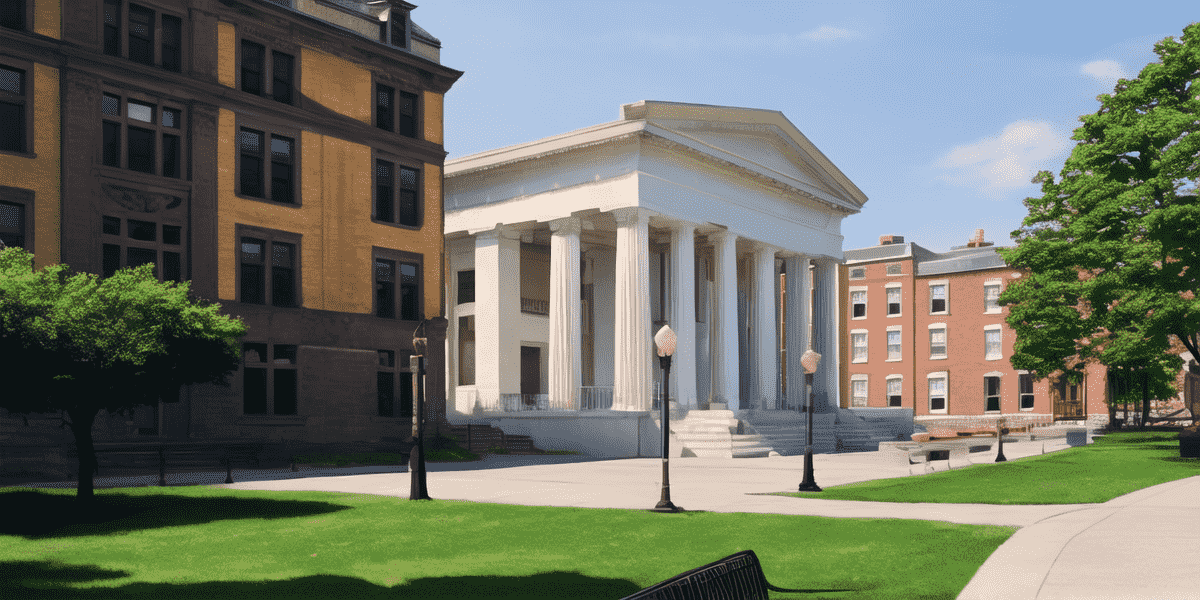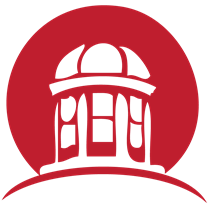Russell Sage College
2024 USNews Best Colleges Ranking: 195(↑24) (Click for schools/majors ranking)
School Characteristics: Private, non-Profit (4-Years)
Calendar systerm: Semester
Religious Affiliation: Not applicable
School Chief: Dr. Christopher Ames (President)
Website: sage.edu/; Phone: 5182442000
Location: 65 1st Street, Troy, NY, 12180

Russell Sage College Important Facts
Russell Sage College Degrees and Majors
Russell Sage College Ranking and Admission
Russell Sage College Admission Score Requires
*Numbers at left represent SAT/ACT submitting percentage, numbers on blue blocks represent 25%-75% admission scores
**Drag green block to check data for different years, click blue block to check scores trends
Russell Sage College Students Diversity
Russell Sage College Students Age Distribution
Russell Sage College International Students Trends
Russell Sage College Campus and Safety
Nearby Top Colleges
Campus Safety
Reference
- Russell Sage College Official Website
- USNews Best Colleges Ranking
- USNews Bset Global Universities Ranking
- THE World University Ranking
- QS World University Ranking
- ARWU World University Ranking
- US Department of Education College Scorecard
- National Center for Education Statistics
- Forward Pathway US College Ranking Database
 Russell Sage College Important Facts Trends
Russell Sage College Important Facts Trends
 Russell Sage College degrees/majors
Russell Sage College degrees/majors
Russell Sage College major details
*Depends on whether majors have graduates in 2022 or not, Yes / No
**Move mouse on can check deitaled graudates number, click for major detailed information
***Due to privacy policy, graduate salaries are not shown for some majors that has few gradautes
| Major | Graduate Salary | Under | Master | Doctor |
|---|---|---|---|---|
| Hospital and Health Care Facilities Administration/Management. | - | |||
| Public Health, General. | - | |||
| Occupational Therapy/Therapist. | $68,901-$68,967 | |||
| Physical Therapy/Therapist. | $68,901-$68,967 | |||
| Registered Nursing/Registered Nurse. | $70,019-$117,403 | |||
| Nursing Administration. | $70,019-$117,403 | |||
| Adult Health Nurse/Nursing. | $70,019-$117,403 | |||
| Family Practice Nurse/Nursing. | $70,019-$117,403 | |||
| Psychiatric/Mental Health Nurse/Nursing. | $70,019-$117,403 | |||
| Health Professions and Related Clinical Sciences, Other. | - |
| Major | Graduate Salary | Under | Master | Doctor |
|---|---|---|---|---|
| Psychology, General. | $42,775 | |||
| Psychology, Other. | $60,793 |
| Major | Graduate Salary | Under | Master | Doctor |
|---|---|---|---|---|
| Educational Leadership and Administration, General. | $154,399 | |||
| Special Education and Teaching, General. | - | |||
| Counselor Education/School Counseling and Guidance Services. | $49,579 | |||
| Elementary Education and Teaching. | - | |||
| Health Teacher Education. | $49,551 | |||
| Physical Education Teaching and Coaching. | $49,551 | |||
| Reading Teacher Education. | $49,551 |
| Major | Graduate Salary | Under | Master | Doctor |
|---|---|---|---|---|
| Business Administration and Management, General. | $45,500-$69,166 | |||
| Business, Management, Marketing, and Related Support Services, Other. | - |
| Major | Graduate Salary | Under | Master | Doctor |
|---|---|---|---|---|
| Nutrition Sciences. | $50,721 |
| Major | Graduate Salary | Under | Master | Doctor |
|---|---|---|---|---|
| Commercial and Advertising Art. | $40,175 | |||
| Drama and Dramatics/Theatre Arts, General. | - | |||
| Fine/Studio Arts, General. | - | |||
| Visual and Performing Arts, Other. | - |
| Major | Graduate Salary | Under | Master | Doctor |
|---|---|---|---|---|
| Biology/Biological Sciences, General. | - | |||
| Biological and Biomedical Sciences, Other. | $58,316 |
| Major | Graduate Salary | Under | Master | Doctor |
|---|---|---|---|---|
| Political Science and Government, General. | - | |||
| Sociology, General. | - | |||
| Social Sciences, Other. | $46,238 |
| Major | Graduate Salary | Under | Master | Doctor |
|---|---|---|---|---|
| Chemistry, General. | - | |||
| Physical Sciences, Other. | - |
| Major | Graduate Salary | Under | Master | Doctor |
|---|---|---|---|---|
| Liberal Arts and Sciences/Liberal Studies. | $32,673 | |||
| Humanities/Humanistic Studies. | $32,673 |
| Major | Graduate Salary | Under | Master | Doctor |
|---|---|---|---|---|
| History, General. | - |
| Major | Graduate Salary | Under | Master | Doctor |
|---|---|---|---|---|
| English Language and Literature, General. | - |
 Russell Sage College Schools/Majors Ranking
Russell Sage College Schools/Majors Ranking
Under Ranking (2024)
Grad Ranking (2025)
*Rankings have been updated to 2025USNews schools/majors ranking, rankings are for reference only
*numbers in bracket represent rankings change compare to last version
 Russell Sage College Varsity Athletes
Russell Sage College Varsity Athletes
| NCAA Division III without football | MEN | WOMEN |
|---|---|---|
| Soccer | 32 | 27 |
| Lacrosse | 30 | 18 |
| Baseball | 34 | - |
| Basketball | 18 | 15 |
| Track and Field (Indoor) | 13 | 18 |
| Track and Field (Outdoor) | 12 | 13 |
| Volleyball | 11 | 14 |
| Softball | - | 19 |
| Cross Country | 6 | 13 |
| Field Hockey | - | 17 |
| Tennis | - | 9 |
| Golf | 6 | 1 |
| Other Sports | - | - |
| NCAA Division III without football | MEN | WOMEN |
|---|---|---|
| Soccer | 22 | 22 |
| Lacrosse | 24 | 15 |
| Track and Field, Outdoor | 14 | 21 |
| Track and Field, Indoor | 12 | 21 |
| Basketball | 15 | 12 |
| Track and Field, X-Country | 8 | 9 |
| Volleyball | - | 16 |
| Softball | - | 15 |
| Field Hockey | - | 11 |
| Tennis | - | 6 |
| Golf | 4 | - |
| NCAA Division III without football | MEN | WOMEN |
|---|---|---|
| Soccer | 25 | 22 |
| Lacrosse | 23 | 20 |
| Basketball | 15 | 13 |
| Volleyball | 9 | 17 |
| Track and Field, Outdoor | 11 | 9 |
| Tennis | 9 | 8 |
| Field Hockey | - | 17 |
| Softball | - | 15 |
| Track and Field, X-Country | 2 | 10 |
| Golf | 6 | - |
| Table Tennis | - | - |
| Weight Lifting | - | - |
| Baseball | - | - |
| Water Polo | - | - |
| Wrestling | - | - |
| Other Sports | - | - |
| Archery | - | - |
| Badminton | - | - |
| Beach Volleyball | - | - |
| Sailing | - | - |
| Bowling | - | - |
| Equestrian | - | - |
| Rodeo | - | - |
| Track and Field, Indoor | - | - |
| Team Handball | - | - |
| Synchronized Swimming | - | - |
| Swimming | - | - |
| Swimming and Diving | - | - |
| Squash | - | - |
| Skiing | - | - |
| Rowing | - | - |
| Rifle | - | - |
| Ice Hockey | - | - |
| Gymnastics | - | - |
| Football | - | - |
| Fencing | - | - |
| Diving | - | - |
| All Track Combined | - | - |

 Russell Sage College Important Facts Trends
Russell Sage College Important Facts Trends
















































































































































































































































































































































































































































